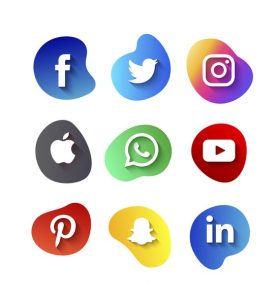Erecpro Male Enhancement – Die natürliche Formel für mehr Energie und männliche StärkeErecpro Male Enhancement – Die natürliche Formel für mehr Energie und männliche Stärke
In einer Zeit, in der Leistungsdruck, Stress und Müdigkeit zum Alltag gehören, suchen viele Männer nach einer Möglichkeit, ihre Vitalität und Energie auf natürliche Weise zu steigern. Chemische Präparate oder synthetische Lösungen sind dabei keine Option für jene, die langfristige Gesundheit und Wohlbefinden anstreben.
Hier kommt Erecpro Male Enhancement ins Spiel – ein Nahrungsergänzungsmittel, das speziell dafür entwickelt wurde, die männliche Energie, Ausdauer und Leistungsfähigkeit zu unterstützen. In diesem Artikel werfen wir einen detaillierten Blick auf die Zusammensetzung, Wirkung und Erfahrungen mit Erecpro und erklären, warum dieses Produkt so viele positive Rückmeldungen erhält.
Was ist Erecpro Male Enhancement?
Erecpro Male Enhancement ist ein natürliches Nahrungsergänzungsmittel, das auf die besonderen Bedürfnisse des männlichen Körpers abgestimmt ist. Es wurde entwickelt, um die körperliche und geistige Leistungsfähigkeit zu verbessern, die Durchblutung zu fördern und das allgemeine Energielevel zu erhöhen.
Im Gegensatz zu künstlichen Stimulanzien setzt Erecpro auf rein pflanzliche Inhaltsstoffe und Vitamine, die den Körper unterstützen, anstatt ihn zu belasten. Das Ergebnis ist eine harmonische Balance aus Energie, Fokus und Vitalität – die Grundlage für ein aktives, erfülltes Leben.
Warum ist Erecpro so beliebt?
Der moderne Lebensstil stellt hohe Anforderungen an den männlichen Körper: lange Arbeitszeiten, wenig Bewegung, unregelmäßige Ernährung und dauerhafter Stress. Diese Faktoren führen häufig zu Müdigkeit, Energiemangel und einer reduzierten Leistungsfähigkeit – sowohl physisch als auch mental.
Erecpro wurde entwickelt, um diesen Herausforderungen entgegenzuwirken. Es hilft dem Körper, sich zu regenerieren, und versorgt ihn mit wichtigen Nährstoffen, die er im hektischen Alltag oft nicht in ausreichender Menge erhält.
Viele Männer berichten, dass sie durch die regelmäßige Einnahme von Erecpro wieder mehr Energie, Motivation und Selbstvertrauen spüren – ein entscheidender Faktor für Lebensqualität und Wohlbefinden.
Die natürliche Zusammensetzung – Wissenschaft und Natur im Einklang
Das Erfolgsgeheimnis von Erecpro Male Enhancement liegt in seiner sorgfältig ausgewählten Kombination aus natürlichen Inhaltsstoffen, die sich gegenseitig in ihrer Wirkung verstärken.
Zu den zentralen Bestandteilen gehören:
Ginseng-Extrakt: Bekannt als natürliches Energie- und Konzentrationsmittel. Es verbessert die Durchblutung und steigert die körperliche Leistungsfähigkeit.
Maca-Wurzel: Unterstützt die hormonelle Balance und gilt als natürlicher Vitalitätsverstärker.
L-Arginin: Eine Aminosäure, die die Blutgefäße erweitert und für eine bessere Sauerstoffversorgung sorgt.
Tribulus Terrestris: Fördert den Testosteronspiegel und stärkt das allgemeine Energielevel.
Zink & Magnesium: Unverzichtbar für Stoffwechsel, Muskelfunktion und Regeneration.
Vitamin B-Komplex: Unterstützt die Energieproduktion und reduziert Müdigkeit.
Diese Inhaltsstoffe sind wissenschaftlich untersucht und werden seit Jahrhunderten in der Naturmedizin zur Förderung der männlichen Vitalität eingesetzt.
Wie wirkt Erecpro Male Enhancement im Körper?
Erecpro zielt darauf ab, den Körper auf mehreren Ebenen zu unterstützen:
Erhöhung der Energieproduktion: Durch die verbesserte Zellversorgung mit Nährstoffen und Sauerstoff wird die natürliche Energieproduktion angekurbelt.
Bessere Durchblutung: L-Arginin und Ginseng fördern eine gesunde Blutzirkulation, was sowohl körperliche als auch geistige Leistungsfähigkeit steigert.
Hormonausgleich: Natürliche Extrakte wie Maca und Tribulus helfen, den Testosteronspiegel auf einem optimalen Niveau zu halten.
Mentale Konzentration: Ginseng und Vitamin B verbessern die Aufmerksamkeit und unterstützen geistige Klarheit.
Stressabbau: Einige Inhaltsstoffe wirken adaptogen – sie helfen dem Körper, Stress besser zu verarbeiten.
Das Zusammenspiel dieser Effekte sorgt dafür, dass Anwender sich vitaler, ausgeglichener und insgesamt stärker fühlen.
Erfahrungsberichte – Was sagen echte Anwender über Erecpro?
Bei der Recherche zu Erecpro fallen vor allem die vielen positiven Rückmeldungen auf. In Erfahrungsberichten wird immer wieder betont, dass die Wirkung natürlich, aber deutlich spürbar ist.
Einige typische Aussagen lauten:
„Nach zwei Wochen fühlte ich mich fitter, hatte mehr Energie und konnte mich besser konzentrieren.“
„Ich merke, dass ich abends weniger erschöpft bin und morgens leichter aus dem Bett komme.“
„Ich finde es beeindruckend, wie natürlich Erecpro wirkt. Kein Herzrasen, keine Nebenwirkungen – einfach mehr Energie.“
Diese Aussagen zeigen, dass Erecpro kein kurzfristiges „Booster“-Produkt ist, sondern eine nachhaltige Unterstützung für den gesamten Organismus bietet.
Langfristige Vorteile von Erecpro Male Enhancement
Viele Nutzer berichten, dass sich die positiven Effekte mit der Zeit verstärken. Nach etwa drei bis vier Wochen regelmäßiger Einnahme stellen sie fest, dass ihre Energie stabil bleibt und sich ihre Ausdauer deutlich verbessert hat.
Langfristig können folgende Vorteile beobachtet werden:
Steigerung der physischen und mentalen Energie
Verbesserung der Ausdauer im Alltag und beim Sport
Bessere Konzentration und geistige Leistungsfähigkeit
Stabilisierung des Hormonhaushalts
Unterstützung eines gesunden Schlafrhythmus
Allgemeines Wohlbefinden und Selbstvertrauen
Diese Effekte resultieren aus der ganzheitlichen Wirkung des Produkts, das Körper und Geist gleichermaßen stärkt.
Gibt es Nebenwirkungen?
Erecpro Male Enhancement besteht ausschließlich aus natürlichen Inhaltsstoffen und ist daher in der Regel sehr gut verträglich.
Es sind keine ernsthaften Nebenwirkungen bekannt.
Vereinzelt kann es bei empfindlichen Personen zu leichter Magenreizung kommen, insbesondere wenn die Kapseln auf leeren Magen eingenommen werden.
In diesem Fall wird empfohlen, sie nach einer Mahlzeit mit ausreichend Wasser zu konsumieren.
Wie sollte man Erecpro einnehmen?
Die empfohlene Dosierung beträgt zwei Kapseln täglich – idealerweise morgens oder vor körperlicher Aktivität.
Die regelmäßige Einnahme ist entscheidend, da pflanzliche Inhaltsstoffe ihre Wirkung über einen längeren Zeitraum aufbauen.
Viele Anwender berichten, dass sie bereits nach 10–14 Tagen erste Ergebnisse spüren, während die volle Wirkung nach etwa vier Wochen erreicht wird.
Wissenschaftliche Grundlage und Qualitätskontrolle
Erecpro wird unter strengen europäischen Standards hergestellt und regelmäßig von unabhängigen Laboren auf Reinheit und Wirksamkeit getestet.
Die Zusammensetzung basiert auf aktuellen ernährungswissenschaftlichen Erkenntnissen.
Besonders hervorzuheben ist, dass das Produkt frei von künstlichen Aromen, Farbstoffen, Gluten und Laktose ist – also auch für Menschen mit empfindlicher Verdauung geeignet.
Warum Erecpro eine langfristige Lösung ist
Viele Männer greifen zunächst zu synthetischen Energieboostern, die kurzfristig wirken, aber den Körper langfristig belasten. Erecpro geht einen anderen Weg: Es bietet dem Körper die Bausteine, die er braucht, um seine Energie und Leistungsfähigkeit natürlich wiederherzustellen.
Statt eine kurzfristige Wirkung zu erzwingen, unterstützt das Produkt den Körper bei der Selbstregulierung – ein entscheidender Vorteil gegenüber chemischen Alternativen.
Einsatzbereiche von Erecpro
Erecpro kann in verschiedenen Lebenssituationen nützlich sein:
Für Männer, die beruflich stark gefordert sind
Für Sportler, die ihre Ausdauer steigern möchten
Für Männer mittleren Alters, die ihre Energie zurückgewinnen wollen
Für alle, die unter Stress oder Energiemangel leiden
In allen Fällen unterstützt das Präparat den Körper dabei, seine natürliche Balance wiederzufinden.
Echte Resultate – Was Nutzer nach Monaten berichten
Interessant ist, dass viele Anwender Erecpro auch nach mehreren Monaten weiternehmen.
Sie berichten, dass ihre Energie konstant bleibt, ihre Stimmung besser ist und sie seltener krank werden.
Ein Anwender schreibt:
„Ich habe Erecpro nun seit vier Monaten in meiner Routine. Ich fühle mich stabiler, ruhiger und leistungsfähiger – und das ganz ohne Nebenwirkungen.“
Diese Art von Rückmeldung zeigt, dass Erecpro tatsächlich eine nachhaltige Wirkung entfalten kann.
Wo kann man Erecpro Male Enhancement kaufen?
Das Originalprodukt ist ausschließlich über die offizielle Website erhältlich.
Das stellt sicher, dass Kunden echte, geprüfte Qualität erhalten – kein Fake, keine Fälschung.
Mehr erfahren Sie hier:
👉 erecpro male enhancement
Die Bestellung ist einfach, diskret und schnell, und viele Käufer berichten von einem reibungslosen Ablauf.
Fazit – Natürlich stärker mit Erecpro Male Enhancement
Erecpro Male Enhancement ist mehr als nur ein Nahrungsergänzungsmittel – es ist eine natürliche Unterstützung für Männer, die ihre Energie, Leistungsfähigkeit und Vitalität steigern möchten, ohne ihren Körper mit chemischen Stoffen zu belasten.
Mit seiner durchdachten Formel aus natürlichen Inhaltsstoffen, den positiven Erfahrungsberichten und der hohen Verträglichkeit ist Erecpro eine überzeugende Wahl für alle, die langfristig etwas für ihre Gesundheit tun wollen.
Die Resultate sprechen für sich: mehr Energie, besseres Wohlbefinden und gesteigertes Selbstvertrauen – Erecpro Male Enhancement ist der natürliche Weg zu mehr Stärke und Vitalität.

